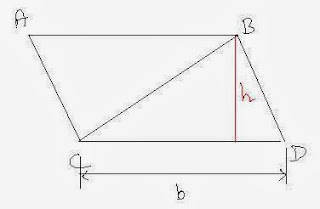Probability is a measure or estimation of the likeliness or likelihood that an event will occur. Probability is used to quantify an attitude of mind towards some proposition of whose truth we are not certain. The proposition of interest is usually of the form "Will a specific event occur?" The attitude of mind is of the form "How certain are we that the event will occur?" The certainty we adopt can be described in terms of a numerical measure and this number, between 0 and 1 (where 0 indicates impossibility and 1 indicates certainty), we call probability. Thus the higher the probability of an event, the more certain we are that the event will occur. A simple example would be the toss of a fair coin. Since the the 2 outcomes are deemed equiprobable, the probability of "heads" equals the probability of "tails" and each probability is 1/2 or equivalently a 50% chance of either "heads" or "tails". Source - Wikipedia
Probability Questions: - Let us find the prob for each event when a coin is tossed five hundred times and the frequency of the two events is given as Head: Three Hundred, tails = two hundreds.
Solution : - We are given that the total number of trials is five hundred. Therefore, the number of times E happens, i.e., the number of time the head comes up is three hundred. Therefore the probability of head = the number of head / Total number of the trials Or P (E) = 300/ 500 = 0.6. Similarly the probability of tail = the number of tail / Total number of the trials Or P (F) = 200/ 500 = 0.4. Hence the prob of success is zero point six and prob of failure is zero point four. The point which is to be noted down is that the total sum of both the probability is equal to one.
Example: - Let us find the prob, when the two coins are tossed simultaneously for four hundred and eighty times and we get the following events. Two heads: one hundred and twenty times (120), One head: Two hundred and three times. (203), No head: one hundred and fifty seven time (157)
Solution:- (1) The probability of getting two heads = the total number of heads divided by the total number of chances. The probability of getting two heads = 120 / 480 = ¼ = 0.25. The probability of getting one heads = 203 / 480 = 0.42292
The probability of getting no heads = 157 / 480 = 0.32708
We can see that P (E₁) + P (E₂) + P (E₃) = 1, cover all the outcomes of a trial.
Or P (E₁) + P (E₂) + P (E₃) = 0. 25 + 0.42292 + 0. 32708 = 1
Example:- The record of a weather station shows that the out of past two hundred consecutive days, its weather forecast is correct for one hundred and forty five ( 145) times. Let us calculate the probability that on a given day it was correct and the probability that on a given day it was not correct.
Solution: - The record of a weather station is available for two hundred consecutive days. The Probability P (E₁) that on a given day the forecast was correct = the number of days when the forecast was correct/ Total number of days for which record is available Or P (E₁) = 145 / 200 = 0.725. P (E₂) that on a given day it was not correct = 55/200 = 0.275, Notice that P (the forecast was correct + the forecast was not correct) = 0.275 + 0.725 = 1
How do you Find Probability: -The word probably, doubts most probably, chances etc are used to define the uncertainty. The uncertainty of the probably etc can be measured numerically by means of probability. Therefore the probability started with gambling, it has been used extensively in the field of physical sciences, commerce, etc. Let there are n number of trials. The probability of an event E happening, is given by P (E) =
Number of trials in which the event happened / the total number of trials.
Let there are n number of trials. The probability of an event E happening, is given by P (E) = Number of trials in which the event happened / the total number of trials.











